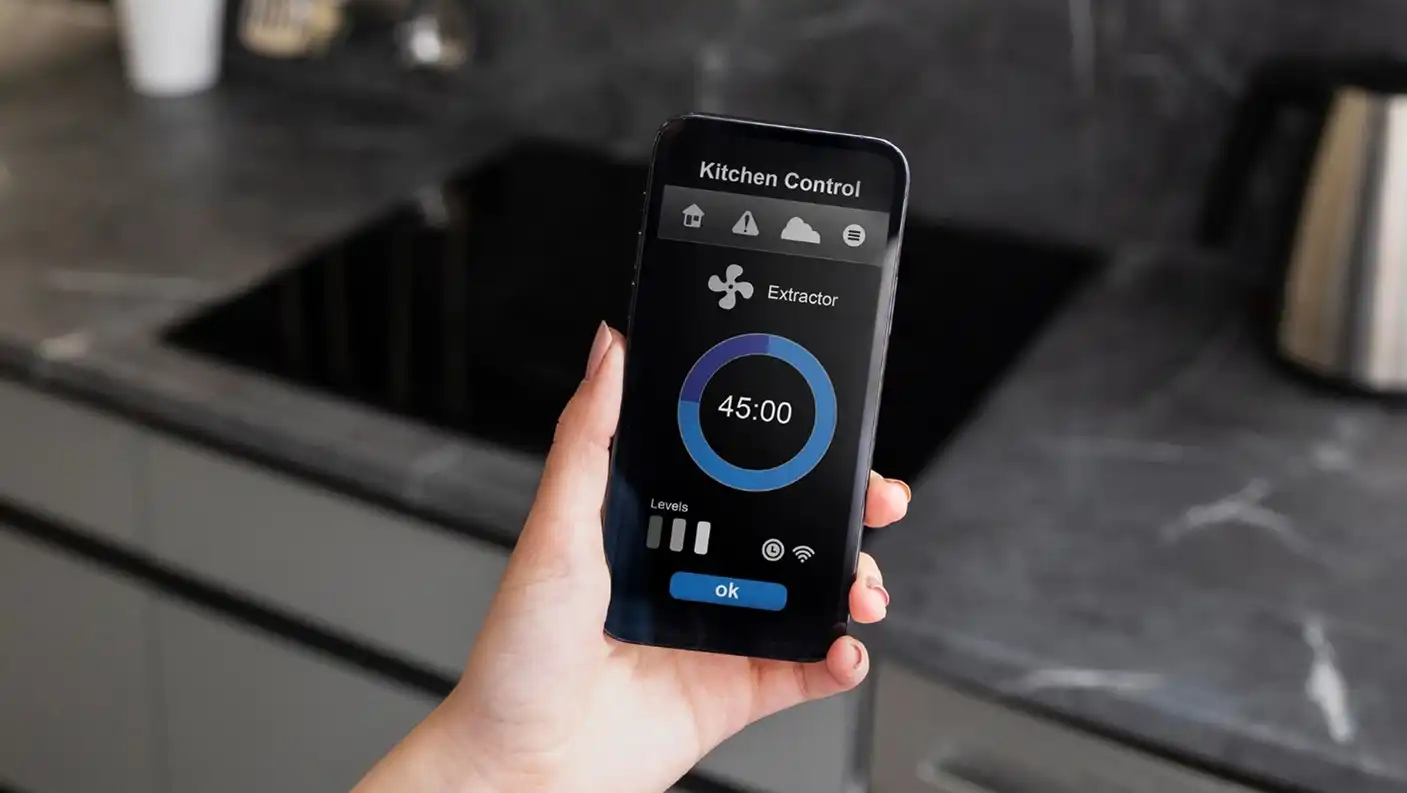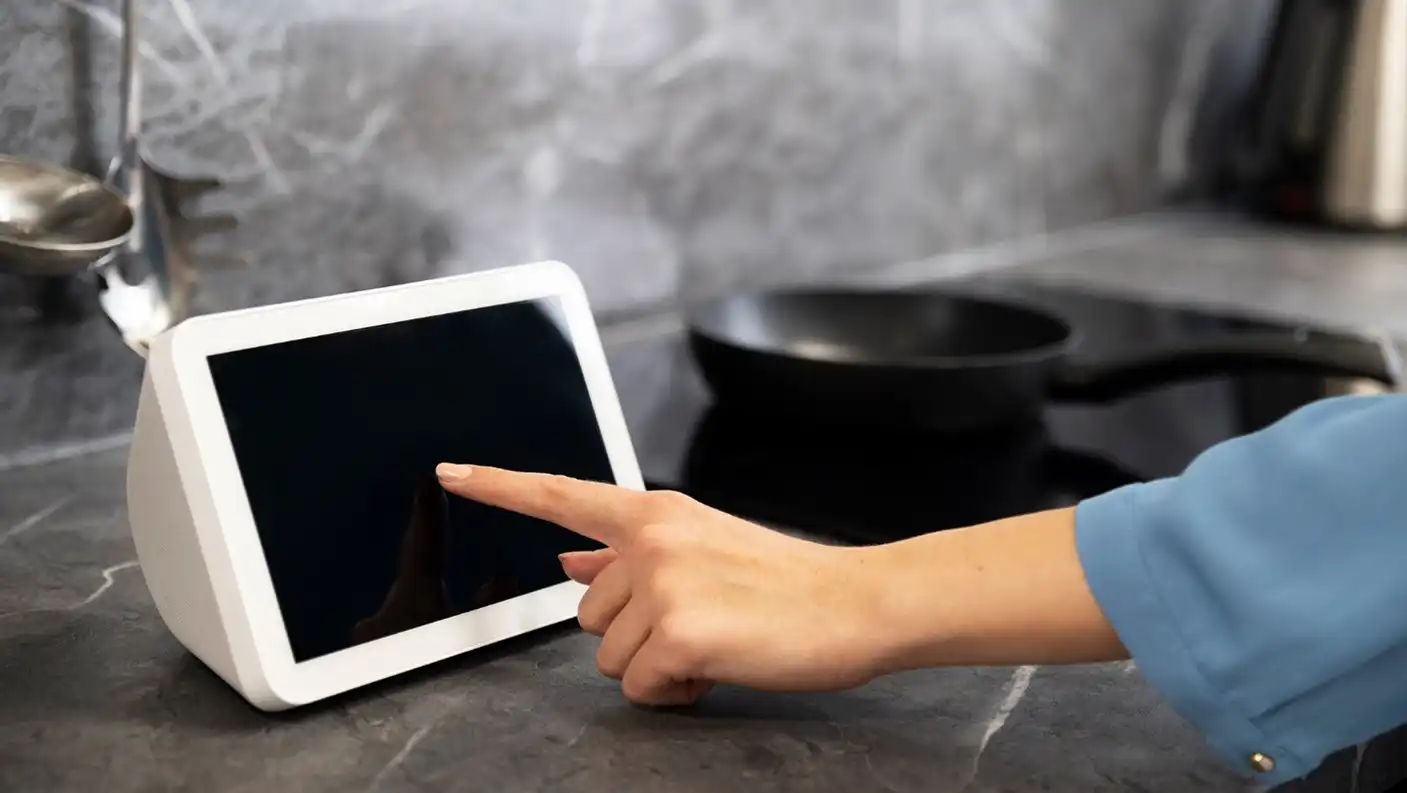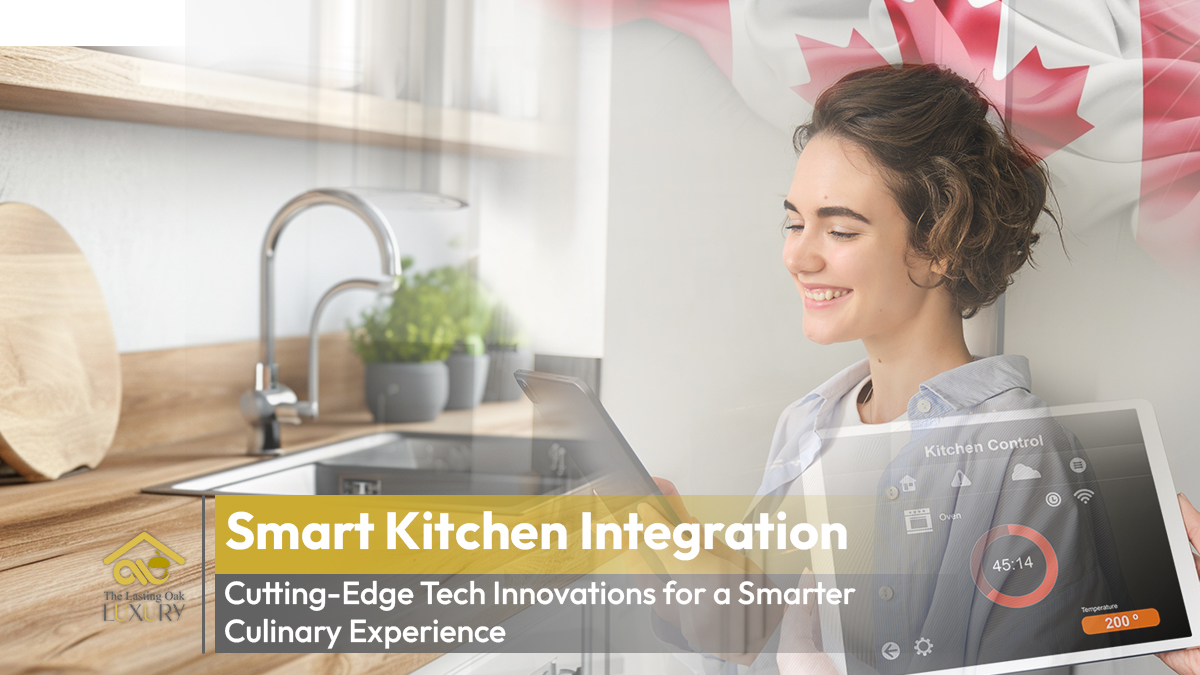Introduction
This article, produced by the research and development unit of LastingOak, explores the latest advancements in smart kitchen integration. As the hub of the home, the kitchen is experiencing a transformative wave of innovation. From integrating smart appliances to adopting sustainable design practices, modern kitchens are becoming more efficient, connected, and environmentally friendly. This guide will delve into the key trends and technologies shaping the future of culinary spaces.

Current Kitchen Design Trends Incorporating Smart Technology
Smart Kitchen Integration One of the most significant trends in modern kitchen design is the integration of smart technology. Smart kitchen integration involves connecting appliances and devices to a central control system, typically accessible through smartphones or voice-activated assistants. This allows homeowners to manage their kitchens efficiently, from preheating ovens remotely to receiving notifications when a refrigerator door is left open. The seamless connectivity of appliances enhances convenience and functionality, making daily tasks easier and more efficient.
Kitchen Design Trends Contemporary kitchen design trends emphasize the blend of technology with aesthetics. Sleek, minimalist designs are prevalent, with hidden appliances and touchscreens integrated into countertops and cabinetry. This not only maintains a clean, uncluttered look but also maximizes space. The use of smart lighting, which can be controlled remotely or set on timers, adds to both the functionality and ambiance of the kitchen. Additionally, the incorporation of smart faucets that can be activated by touch or voice command reflects the ongoing trend of combining style with cutting-edge technology.
Sustainable Kitchen Design Sustainability is a key consideration in current kitchen design trends. Sustainable kitchen design focuses on using eco-friendly materials and practices to reduce the environmental impact. This includes the use of recycled materials for countertops and cabinetry, as well as energy-efficient appliances. Smart kitchen technology often complements these sustainable practices by providing features like energy consumption monitoring, which helps homeowners optimize their energy use and reduce waste. Water-saving faucets and appliances also contribute to a more eco-friendly kitchen.
Energy-Efficient Kitchen Energy efficiency is a crucial aspect of modern kitchen design. Energy-efficient kitchens are equipped with appliances that meet high standards of energy conservation, such as induction cooktops and energy star-rated refrigerators. These appliances not only reduce energy consumption but also lower utility bills. Smart thermostats and lighting systems further enhance energy efficiency by allowing precise control over temperature and lighting, ensuring that energy is used only when necessary. This integration of energy-efficient technologies supports a sustainable lifestyle while maintaining the kitchen’s functionality and comfort.
Enhancing Functionality and Convenience with Smart Kitchen Technology
Smart Kitchen Integration Smart kitchen technology significantly enhances the functionality and convenience of the kitchen space through seamless smart kitchen integration. By connecting various kitchen appliances and devices to a central control system, typically accessible via smartphones or voice-activated assistants, users can manage and monitor their kitchen operations effortlessly. For instance, you can preheat your oven remotely, receive notifications when your groceries are running low, and even control the timing and intensity of your lighting, all from a single interface. This level of integration simplifies daily tasks and streamlines kitchen management, making cooking and other activities more efficient and enjoyable.
Automated and Voice-Controlled Appliances The incorporation of automated and voice-controlled appliances further boosts convenience. Smart refrigerators can suggest recipes based on their contents, while voice-activated assistants can set timers, play music, or provide cooking instructions without the need for manual input. These technologies reduce the time and effort required to perform routine tasks, allowing you to focus on more complex culinary endeavors or simply enjoy more leisure time.
Impact on Energy Usage
Energy-Efficient Kitchen One of the most significant benefits of smart kitchen technology is its potential to create an energy-efficient kitchen. Smart appliances are designed to optimize energy use, often exceeding the performance of traditional models. For example, energy star-rated refrigerators, smart dishwashers, and induction cooktops use less power while providing superior functionality. These appliances are equipped with features like adaptive cooling, precise heating, and energy consumption monitoring, which help reduce overall energy usage.
Real-Time Monitoring and Management Smart kitchen technology enables real-time monitoring and management of energy usage. Homeowners can track the energy consumption of individual appliances through apps and make informed decisions about their use. For instance, smart thermostats can adjust the kitchen’s temperature based on occupancy and usage patterns, ensuring that energy is not wasted when the kitchen is not in use. Similarly, smart lighting systems can be programmed to turn off automatically when no one is present, further reducing unnecessary energy expenditure.
Sustainable Kitchen Design Integrating smart technology with sustainable kitchen design can lead to even greater energy savings. By using eco-friendly materials and incorporating energy-efficient appliances, homeowners can create a kitchen that is both technologically advanced and environmentally responsible. Smart kitchen integration allows for the optimization of all systems, ensuring that energy efficiency is maintained without compromising on performance or convenience.

Benefits and Challenges of Adopting a Smart Kitchen
Benefits
Enhanced Convenience
- Smart Kitchen Integration: With smart kitchen integration, various appliances and devices can be controlled from a single interface, such as a smartphone or voice-activated assistant. This allows for effortless management of kitchen tasks, from preheating ovens remotely to setting cooking timers via voice commands.
- Automated Functions: Automated appliances can perform routine tasks independently, such as adjusting cooking temperatures, suggesting recipes, and even placing grocery orders. This automation reduces the time and effort required for meal preparation and kitchen management.
Improved Energy Efficiency
- Energy-Efficient Kitchen: Smart appliances are designed to optimize energy use, which can lead to significant reductions in energy consumption. Energy star-rated refrigerators, smart dishwashers, and induction cooktops use less power while maintaining high performance.
- Real-Time Monitoring: Smart kitchen technology allows for real-time monitoring of energy usage, helping homeowners identify and manage high-energy consumption areas. This can lead to more informed decisions about appliance use and further energy savings.
Sustainability
- Sustainable Kitchen Design: Incorporating smart technology into sustainable kitchen design enhances eco-friendliness. Features like smart lighting, water-saving faucets, and energy-efficient appliances contribute to a greener kitchen that reduces the household’s overall environmental impact.
Enhanced Safety
- Safety Features: Smart kitchens often include safety features such as automatic shut-off for stoves, alerts for gas leaks, and monitoring of appliance malfunctions. These features help prevent accidents and ensure a safer cooking environment.
Customization and Personalization
- Personalized Settings: Smart appliances can learn user preferences and cooking habits, allowing for a highly personalized kitchen experience. For example, coffee machines can brew coffee to your exact liking, and smart ovens can adjust settings based on your past cooking patterns.
Challenges
High Initial Costs
- Investment: The initial cost of purchasing and installing smart kitchen appliances and systems can be high. This can be a significant barrier for many homeowners, especially when compared to the cost of traditional appliances.
Complexity and Learning Curve
- User Learning: Adopting a smart kitchen requires users to learn how to operate new technologies and systems. This can be challenging, particularly for those who are not tech-savvy.
- Integration Issues: Ensuring that all smart devices and appliances work seamlessly together can be complicated, and compatibility issues may arise.
Maintenance and Repairs
- Technical Problems: Smart appliances may require more frequent maintenance and can be more challenging to repair than traditional appliances. Finding skilled technicians to handle these repairs can also be more difficult and expensive.
- Software Updates: Regular software updates are necessary to keep smart appliances functioning optimally, which can be inconvenient and sometimes problematic if updates cause compatibility issues.
Privacy and Security Concerns
- Data Security: Smart kitchen appliances often collect data on user habits and preferences. This data can be vulnerable to hacking or misuse if not properly secured, raising concerns about privacy and data protection.
- Network Security: Connecting multiple devices to a central network can increase the risk of security breaches. Ensuring robust network security is essential to protect against potential cyber threats.
Dependence on Technology
- Reliability: Smart kitchens rely heavily on technology and internet connectivity. Power outages or network failures can disrupt the functionality of smart appliances, potentially causing inconvenience or even rendering the kitchen temporarily unusable.
Conclusion
The future of kitchen design lies in the integration of smart technology, adherence to current design trends, and a commitment to sustainability. By embracing these cutting-edge innovations, homeowners can transform their culinary spaces into smarter, more efficient, and eco-friendly environments. The research and development team at LastingOak remains dedicated to staying at the forefront of these advancements, ensuring that our clients’ kitchens are models of modern innovation.
This comprehensive analysis underscores the potential of smart kitchen technology to revolutionize the way we interact with our culinary spaces. By focusing on smart kitchen integration, embracing kitchen design trends, promoting sustainable kitchen design, and prioritizing energy efficiency, LastingOak can continue to lead the way in creating the kitchens of the future.
Frequently Asked Questions (FAQs)
1. What is smart kitchen integration and how does it work?
Answer: Smart kitchen integration involves connecting various kitchen appliances and devices to a central control system, often accessible via smartphones or voice-activated assistants. This system allows you to manage and monitor your kitchen operations seamlessly, such as preheating ovens remotely, receiving notifications when groceries are low, and adjusting lighting or temperature settings. It enhances convenience by making your kitchen tasks more efficient and easier to handle.
2. What are the latest kitchen design trends that incorporate smart technology?
Answer: Current kitchen design trends emphasize the blend of smart technology with sleek, minimalist aesthetics. Popular trends include hidden appliances, integrated touchscreens, and smart lighting systems. These designs maintain a clean, uncluttered look while maximizing functionality. Smart faucets and voice-activated assistants are also becoming common, providing a modern and highly functional kitchen space.
3. How can I make my kitchen more energy-efficient?
Answer: To create an energy-efficient kitchen, consider incorporating smart, energy star-rated appliances like induction cooktops, refrigerators, and dishwashers. These appliances use less power while maintaining high performance. Additionally, using smart thermostats and lighting systems can help you monitor and manage energy usage more effectively. Integrating these technologies can lead to significant energy savings and lower utility bills.
4. What are the benefits of sustainable kitchen design?
Answer: Sustainable kitchen design focuses on using eco-friendly materials and practices to reduce environmental impact. Benefits include lower energy and water consumption, reduced waste, and the use of recycled materials for countertops and cabinetry. Sustainable kitchens are not only environmentally responsible but also often more cost-effective in the long run due to reduced utility bills and maintenance costs.
5. Are smart kitchens safe to use?
Answer: Yes, smart kitchens can enhance safety through various features such as automatic shut-off for stoves, alerts for gas leaks, and monitoring of appliance malfunctions. These technologies help prevent accidents and ensure a safer cooking environment. However, it’s important to ensure that all smart devices are properly installed and maintained to maximize their safety benefits.
6. How much does it cost to convert a traditional kitchen into a smart kitchen?
Answer: The cost of converting a traditional kitchen into a smart kitchen can vary widely depending on the extent of the upgrades and the specific technologies chosen. Basic smart appliances might cost a few hundred dollars each, while a full renovation incorporating high-end smart technology can run into the thousands. It’s best to consult with a professional to get an accurate estimate based on your specific needs and budget.
7. What challenges might I face when adopting smart kitchen technology?
Answer: Challenges of adopting smart kitchen technology include high initial costs, the complexity of setup and integration, maintenance and repair issues, and privacy and security concerns. It’s important to plan carefully, choose compatible devices, ensure robust network security, and stay updated with software and firmware to mitigate these challenges.
8. Can smart kitchen technology help me save on utility bills?
Answer: Yes, smart kitchen technology can help reduce utility bills by optimizing energy and water usage. Energy-efficient appliances, smart thermostats, and lighting systems ensure that energy is used only when needed, leading to significant savings over time. Real-time monitoring also allows you to identify high-energy consumption areas and make adjustments accordingly.
9. How do I get started with creating a smart kitchen?
Answer: To get started with creating a smart kitchen, begin by identifying the areas where smart technology can provide the most benefit, such as cooking, refrigeration, lighting, and security. Research and choose compatible smart appliances and devices that fit your needs and budget. Consider consulting with a professional to ensure proper installation and integration of the technologies into your existing kitchen design.
10. What are some examples of popular smart kitchen appliances?
Answer: Popular smart kitchen appliances include smart refrigerators with touchscreens and inventory tracking, induction cooktops with precise temperature control, voice-activated assistants like Amazon Alexa or Google Assistant, smart dishwashers with energy-efficient cycles, and automated coffee makers that can be controlled remotely. These appliances enhance convenience, efficiency, and functionality in the kitchen.


